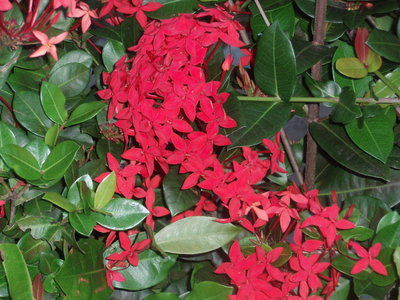
MEXICO — I’m halfway through my trip in Mexico. I started in Tuxtla, the capital of Chiapas, last week and will stop today in Campeche in Yucatan on the Gulf of Mexico. How different are the people, the soils, the climate, the weather and the landscapes of each locale. It’s as diverse as going from Bonny Doon to Pasatiempo to Scotts Valley and then to San Lorenzo Valley.
Well, maybe we don’t have alligators and monkeys in our gardens, like the people of Cañon de Sumidero. But with 50 inches of rainfall each year, the people here grow bougainvillea, bananas, dates, native succulents and tall cactus.
The residents of the town of Chiapa de Corzo keep “sustainable” gardens. At this higher elevation, most people grow what they can eat. Maize, citrus and fava beans are in nearly every small garden plot.
The people of San Cristobal de las Casas, a large city at 7,000 feet, grow a little bit of everything. Some plants are cultivated, such as angel trumpet, impatient oliveri, marigolds and some sunflowers and santivalia. The people who live in the center of the city have their gardens in courtyards behind large walls, which are traditional in Latin countries. Bougainvilleas are common, despite the cold weather. It must not actually freeze in the winter, as they were happily growing everywhere.
Nearby, a village called San Juan Chumals had dozens of greenhouses, all growing marigolds. The native people use lots of these flowers as traditional decorations in religious ceremonies. They are also used extensively on the Day of the Dead, the holiday that follows Halloween.
Every small house grows marigolds, as well as maize, squash, fava beans and other edible greens. Long-haired black sheep are also common, and their wool is used to weave a type of poncho worn by the men and in skirts worn by women. I also saw fuchsias, tree dahlias and cosmos growing outside houses and small restaurants. Pine tree forests are plentiful at this altitude.
Further up in the mountains, in Los Altos de Chiapas, apples grow. The elevation is 9,000 feet. Red clay soil supports poinsettias that bloom at this time of year. Canna lilies and celosia are commonly grown, and the pine trees sport tillandsias and bromeliads in the nooks of their branches. Every garden has coffee bushes instead of maize. Asclepsias, or butterfly weed, grows here, too, but I didn’t see any monarchs.
Passing the continental divide and descending down to sea level on the peninsula, the weather turned more tropical, although it was still mild at this time of year. The ceiba tree, the source of kapoc for stuffing pillows, is native to this region. Bromeliads, tillandsias, lilies, elephant ears, bougainvillea, coffee, coleus, impatiens and marigolds are typically grown around houses. Scarlet runner beans, morning glories, ficus trees, and banana, pineapple, avocado, papaya and gum trees are also common. Red clay soil is typical here, too.
Past the tropical rain forest of Palenque, the Maya ruins, we entered the flat cattle-grazing lands of the eastern part of the state of Tabasco and continued on to the state of Campeche.
Cattle egrets by the hundreds gather in the fields. Banana, mango and sugar cane surround small ranch houses. If you live by one of the large rivers, apparently you need to beware of the alligators, especially after a rain.
Small, bluish palms are grown to mark the long driveways leading up to houses and horses corrals. Coconut palms, mangoes, citrus and orchards of “custard apples” grow beside the road. One house was surrounded with potted plants, although this is not usual.
Blooming water lilies cover some of the numerous ponds. Rainfall here is 70 inches per year.
Stay tuned for Part 2 of my travels in Mexico, as I travel in the Yucatan Peninsula from Campeche to the ruins of Uxmal, the city of Merida, the fishing village of Celestun and finally Playa del Carmen on the Caribbean.
Jan Nelson, a landscape designer and California certified nursery professional at Plant Works in Ben Lomond, will answer questions about gardening in the Santa Cruz Mountains. Contact her at ja******@*ol.com or JanNelsonLandscapeDesign.com.












